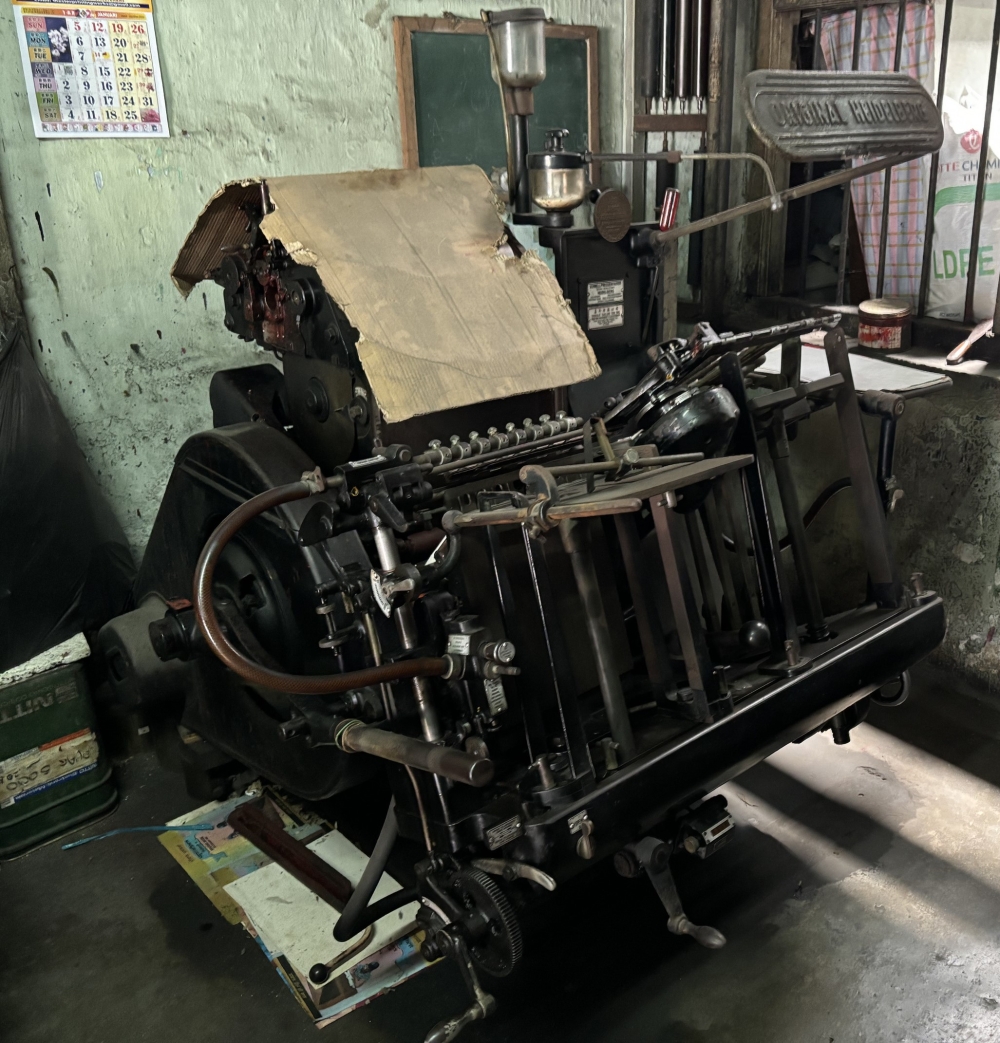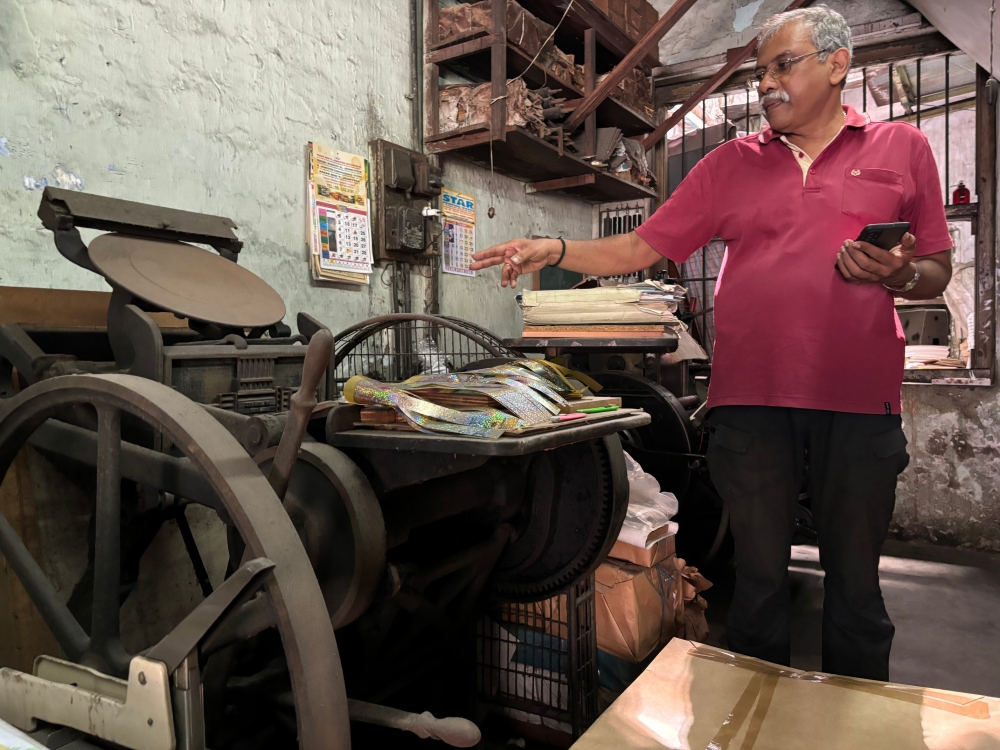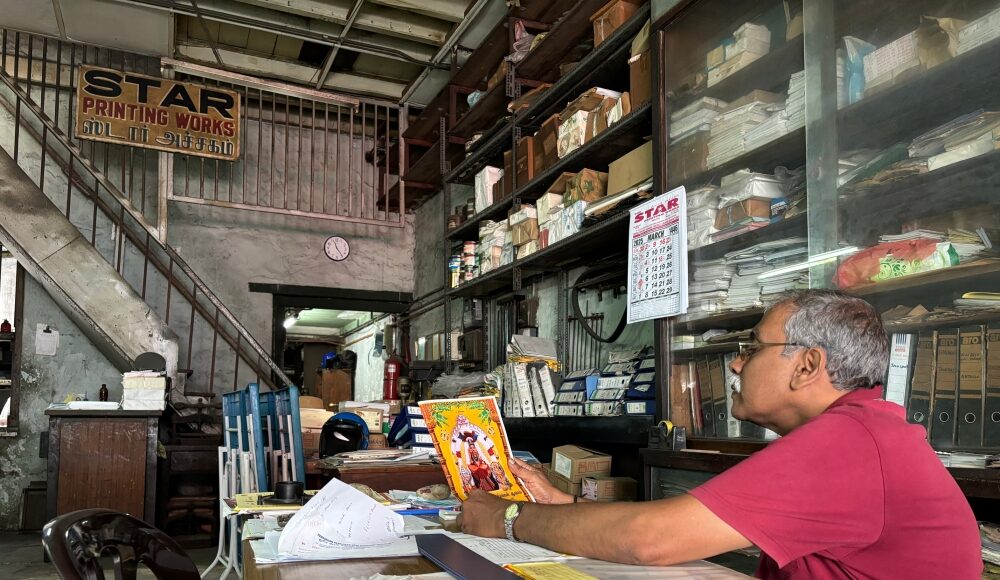IPOH, April 26 — The Star Printing Shop may be the last of its kind, a living testament to the traditional art of hand-press printing.
Established in 1933, the shop exudes a sense of timelessness as you step inside, with walls stripped of paint, chipped and faded from years of use.
The machines, though worn, stand as relics of a bygone era, enduring for decades, while dusty shelves overflow with printing materials.
The shop has now adapted, to some degree of computerised printing, to survive in the modern market. However, the old printing machines, which are unique and rare, are still carefully preserved.
Owner C. Veeramani, 65, said that the goal is to keep the shop alive for people to appreciate and understand how printing was done in the past.
“Despite transitioning to computerised printing about 15 years ago, we continue to maintain all the old machines, as they are rare and considered antiques.
“The reason is that we want people, especially future generations, to understand how printing was done in those days.
“It was much more challenging compared to the ease of digital printing,” he told Malay Mail during a visit to the shop on Jalan Sultan Yussof here.
Veeramani explained that he comes from a long line of printers, with his grandparents having started a printing press — a tradition passed down to his father and now to him.
Veeramani with the Alexandra press, which is believed to be more than 120 years old. — Picture by John Bunyan
“My father took over the printing business from my grandfather in the 1930s,” Veeramani said, adding that he began learning the trade in his youth.
“In 1987, I bought Star Printing Works to start my own business. The man running the printing press at the time was elderly and wanted to return to India, so he sold it to me,” he said.
He also said that the shop already had traditional printing machines that are rare when he took over.
“One of the machines is called the Alexandra press, which is made in the United Kingdom, and to my knowledge, the machine could be more than 120 years old.
“We also have other machines, such as one from the United States, which is 90 years old, and a Heidelberg machine from Germany, which is about 70 years old,” he said.

The Heidelberg printing machine from Germany is about 70 years old. — Picture by John Bunyan
While maintaining the old machines is not as burdensome now, given that most of the work is done using modern methods, Veeramani explained that this was not the case when they relied entirely on the machines in the past.
“These machines are imported and one of a kind, so it’s not easy to find spare parts locally if something breaks or gets damaged.
“We often have to modify some of the spare parts to keep the machines running. We usually refer the broken parts to engineering shops that are willing to fix them for us, and it doesn’t come cheap,” he said.
He noted that his business is facing fierce competition from newcomers who use advanced technology in printing.
“Our business has obviously declined, but we are still surviving. We have loyal customers who continue to seek us out for printing work.
“To date, we still print billboards, wedding invitations, business cards, calendars, pamphlets and even school magazines,” he said.
However, Veeramani noted that the future of the printing shop looks bleak.
“We are still running the business, but not sure for how long. After me, there is no one else to take over this business.
“And at the moment, we have a limited amount of people who know about this old trade,” he added.
He also expressed hope and willingness to allow the government or tourism stakeholders to take over the shop and convert it into a museum or printing exhibition centre, as he wants the tradition to be preserved.
“To this day, I have students and foreigners visiting the shop for academic and tourism purposes. Some even come just to see the old printing methods.

Veeramani expressed hope that the government or tourism stakeholders can take over his shop and convert it into a museum or printing exhibition centre. — Picture by John Bunyan
“If we close the shop now, I’m sure most people will never know how printing was done in those days as we are the last traditional printing shop,” he said.





